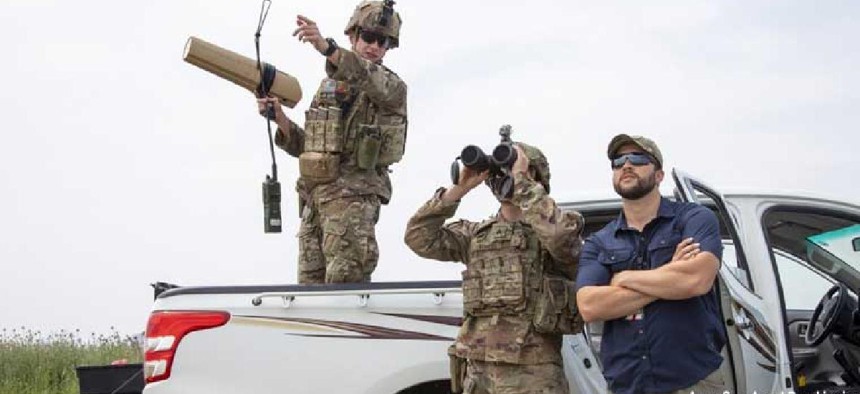Army sees counter-drone tools for cooks, medics
The threats posed by the growing number of small drones make it imperative that counter-UAS systems can be operated by all service members.
The Army is leading the Defense Department's strategy for making platforms and devices to counter small unmanned aerial systems usable by all service members.
In January, the Pentagon released its counter sUAS strategy, highlighting the threats posed by the growing number of small drones to siphon off data and endanger DOD personnel, facilities and assets.
The idea is to make the counter-UAS job "agnostic," according to Marc Pelini, division chief for capabilities and requirements for the Pentagon's Army-led Joint Counter Small UAS Office (JCO).
"I think inherently the Army is really looking hard at making counter-UAS a [military occupational specialty] agnostic platform where ... anyone from a cook to a medic to an infantryman, tanker can operate the system," Pelini told reporters on Feb. 2.
As a result, the Army is looking to shape requirements and materiel solutions that have intuitive user interfaces, while also developing complementary training that can be "institutionalized and promulgated out to the force," he said.
The Army is also planning two industry demonstrations this year, the first of which is scheduled for early April at Yuma Proving Ground in partnership with the Air Force, focusing on low-collateral effect interceptor capabilities.
The ultimate goal is to align existing counter-UAS solutions for warfighter needs and use resources more efficiently, said Maj. Gen. Sean Gainey, director for the JCO and Army Fires in the G3/5/7.
"The cost of prevalence in this threat can be everywhere and affect every echelon," Gainey said. "You have to have that capability pretty much in as many locations as you can."
This article was first posted to FCW, a sibling site to Defense Systems.
NEXT STORY: DOD orders leaders to address extremism





